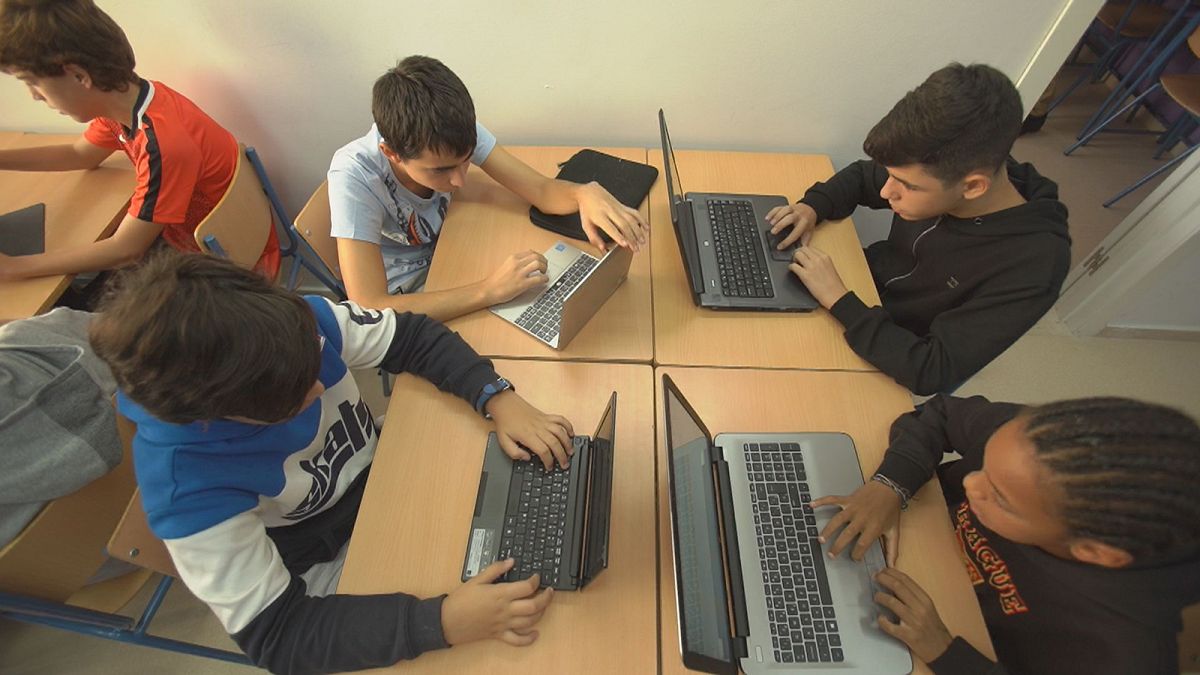In this episode of Futuris we take a look at a new online self-reflection tool aiming to make the most of digital technology in the classroom.
Many schools in Europe are embracing digital technology as a way to improve the learning experience in the classroom. Itaka school in the Spanish city of Seville is no different. Most of the students at the school now rely on portable electronic devices rather than on textbooks. Working in groups, the students use cloud-based documents to work on school projects both at home and in the classroom. Innovative subjects like robotics are also included in the curriculum.
"As teenagers, we really like these technologies. I think this way we are more involved in our school assignments instead of just having books to read," says student Blanca Muñoz Umpiérrez.
Despite the trend towards digital technology in the classroom, questions remain over whether children are getting the most out of such innovative methods and devices. With experts estimating around 90 percent of jobs in the future will require digital skills, it is becoming increasingly important for schools to know more about how students, teachers and administrators interact with such technology.
Carmen Lázaro, the head teacher at Itaka school says: "We've never really stopped to analyse how we're using it, and above all how we want to use it in the future. In other words, what is our action plan for the coming years?"
But the ways in which we assess the effectiveness of digital technology in the classroom is changing. Itaka is one of 650 schools across Europe which have been testing a new online self-reflection tool, called SELFIE. It anonymously gathers the views of students, teachers and head teachers and produces a tailor-made report summarising the school's strengths and weaknesses when it comes to using technology for learning.
Panagiotis Kampylis is SELFIE's project coordinator.
"In SELFIE, we collect information based on a 360 degree approach — it’s not just about infrastructure, devices, WiFi, etc. — it's also about how the technologies are used for teaching and learning, for the students’ reports, for communication and so on."
SELFIE has been developed by the European Commission's Joint Research Centre and Directorate-General for Education, Youth, Sport and Culture, together with a panel of experts from across Europe. The tool is available to any school, not only so-called "digital champions". It is completely free, and is designed to be very easy to use.
"SELFIE is a part of the European Commission's Digital Education Action Plan, and the target is to have one million users by the end of 2019 — namely school leaders, teachers and students from EU member states and the Western Balkan countries," Kampylis says.
Officially launched at the end of October in a school in Warsaw, SELFIE is now available in 24 EU languages. The plan is to add more languages later, including Serbian, Russian, Georgian and Turkish. The tool helps schools to understand where they are in terms of digital education, without comparing them to others.
Joanna Kiełbasa, the head teacher at Klementyna Hoffmanowa High School in Warsaw says: "It's very important for a director to know how the school works at all levels — how the students are doing, what teachers think, how well equipped we are. I might think my school is at the top, but what if I'm wrong? The SELFIE tool helps check that."
Given that every school is different, the SELFIE tool can also be customised by schools themselves. For example, optional questions can be easily added to adapt the tool to the individual selection of subjects and teaching methods.
Deirdre Hodson, the European Commission's SELFIE project coordinator says: "It's a very flexible tool, and it's very modular, and it's really made for the school's own self-reflection. It's not about reaching a target, not about comparing one school or the other — it's really about a school taking a selfie, a snapshot of where they stand on this journey on embedding digital technologies into education."
To find out more or to try the SELFIE tool at your school, click on this web link.




